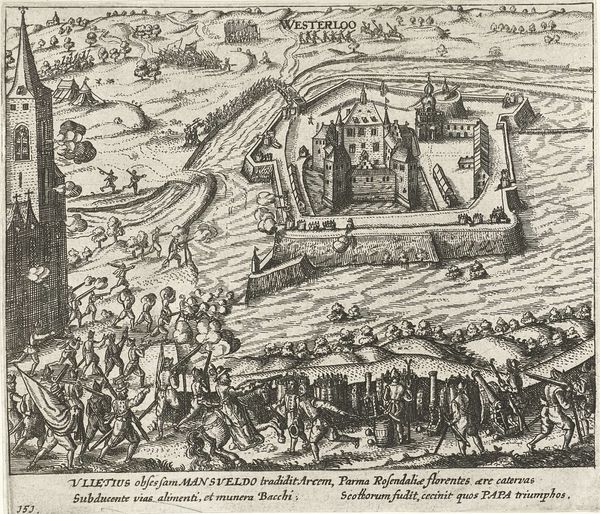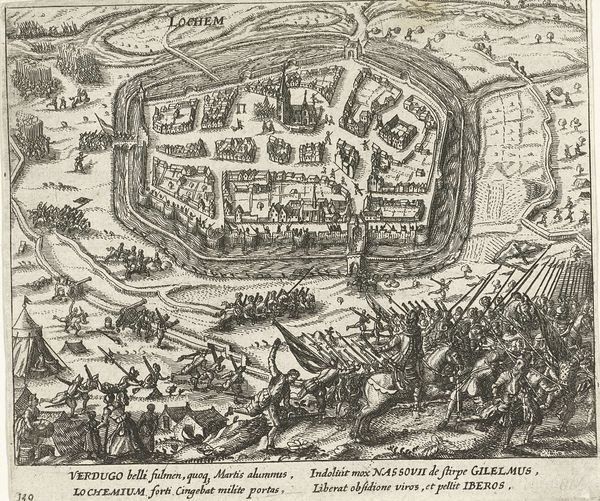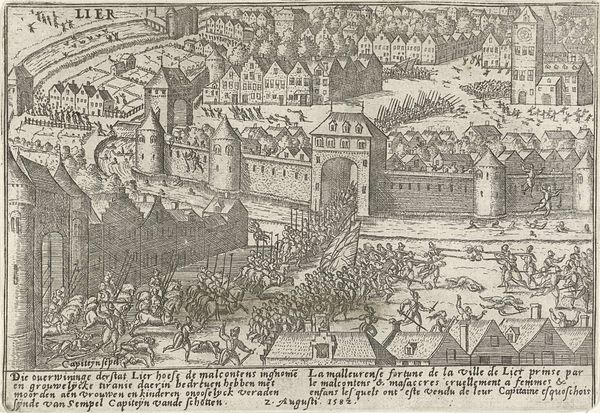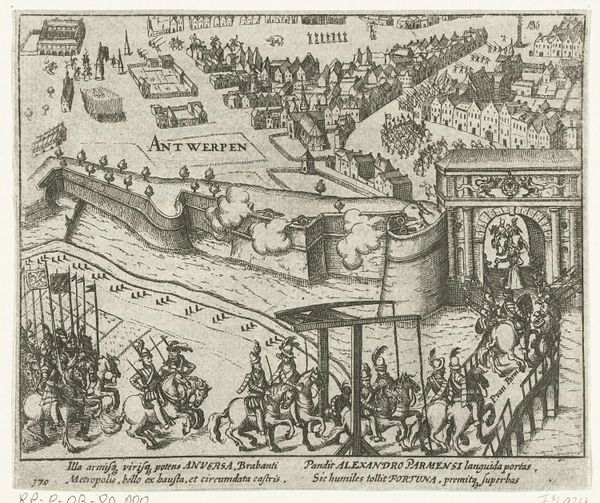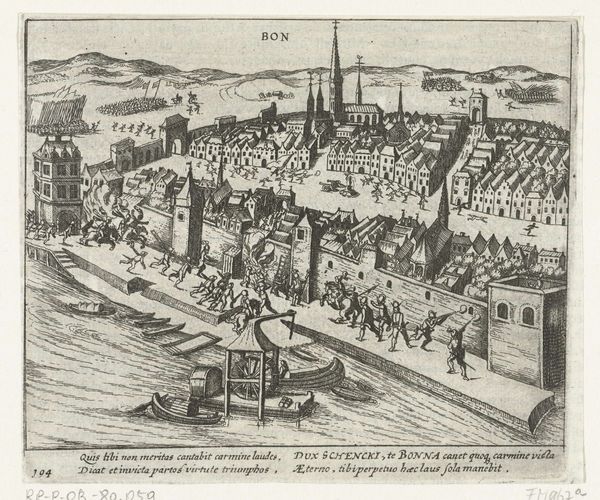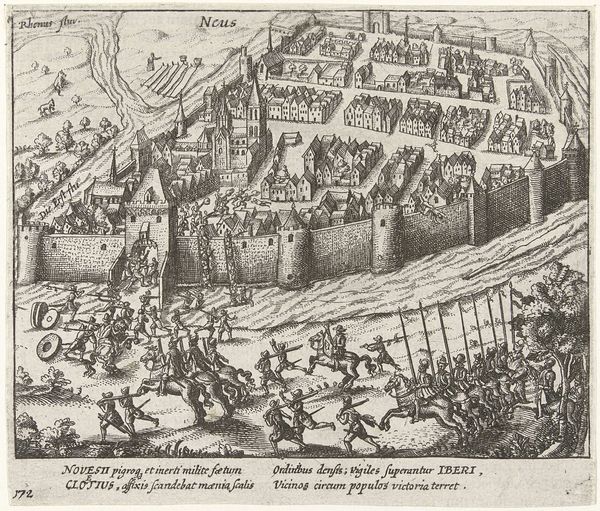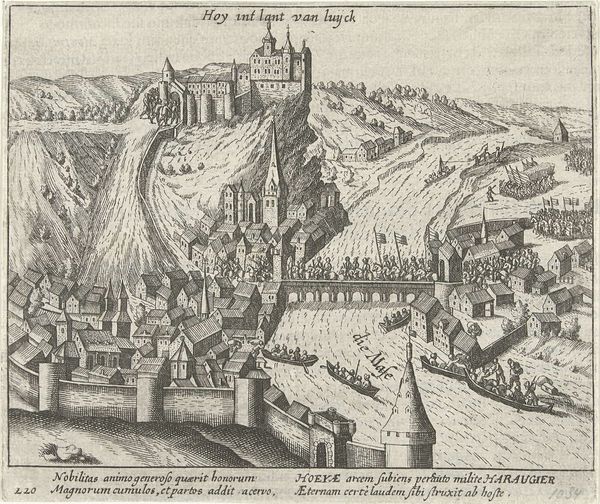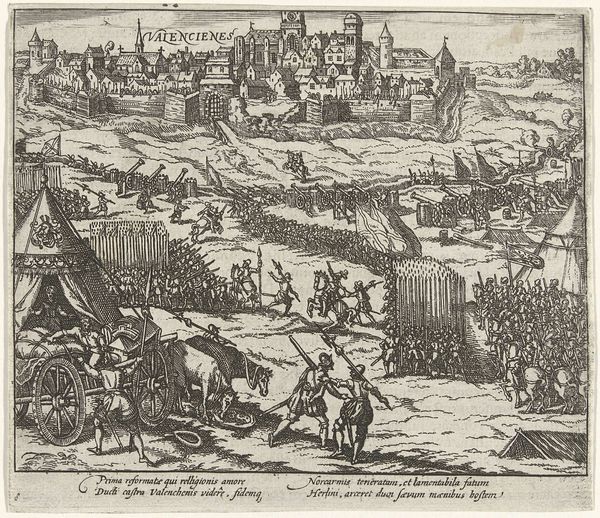
print, engraving
#
narrative-art
#
baroque
#
pen drawing
#
mechanical pen drawing
# print
#
pen illustration
#
pen sketch
#
old engraving style
#
pen-ink sketch
#
pen work
#
cityscape
#
history-painting
#
engraving
Dimensions: height 135 mm, width 174 mm
Copyright: Rijks Museum: Open Domain
Curator: Here at the Rijksmuseum, we're looking at an engraving from 1613-1615 titled "Hoofdman Biel te Kerpen opgehangen, 1579." While the artist remains anonymous, the print depicts the siege of Kerpen. Editor: It's bleak, isn't it? That stark black ink against the paper—a scene of devastation rendered in precise lines. The hanging body… it immediately evokes questions about power, justice, and resistance. Curator: Absolutely. It’s vital to situate this image within the context of the Eighty Years' War. The siege of Kerpen was a specific event, but it’s indicative of the larger conflict between the Dutch Republic and the Spanish Habsburgs. Farnese, mentioned in the Latin inscription, led the Spanish forces. Editor: The inscription frames Farnese’s actions heroically. Yet, the brutal reality displayed tells a different story. We see not just victory, but subjugation, the silencing of dissent. How does the artist’s choice to focus on this specific event within the siege inform the piece as a whole? Is it a warning? An observation? Curator: It’s challenging to say definitively. Prints like these served various purposes: documentation, propaganda, even entertainment. The cityscape provides context, showcasing the strategic importance of Kerpen. Editor: Note the meticulous detail given to the weaponry—cannons blazing, soldiers in formation. It glorifies military prowess, but I’m drawn to the small details of violence—the gallows dominating the skyline. The composition is striking—drawing our eye to the execution despite the grandeur surrounding it. Curator: The visual rhetoric reinforces established power structures, but also subtly immortalizes Biel’s resistance, the execution a constant visual marker of his defiance. It's a reminder that even in defeat, resistance leaves a mark. Editor: It makes me consider how images like this contribute to collective memory, constructing narratives about who is remembered, and on what terms. It's crucial we look critically at who holds power within a depicted event. Curator: Indeed, examining this engraving gives us a window into the socio-political landscape of the time, and allows us to understand the power dynamics inherent in the production and reception of art. Editor: A chilling testament to conflict and control, and, through art, an unintended acknowledgement of the human cost of these sieges, of standing up to oppressors.
Comments
No comments
Be the first to comment and join the conversation on the ultimate creative platform.

